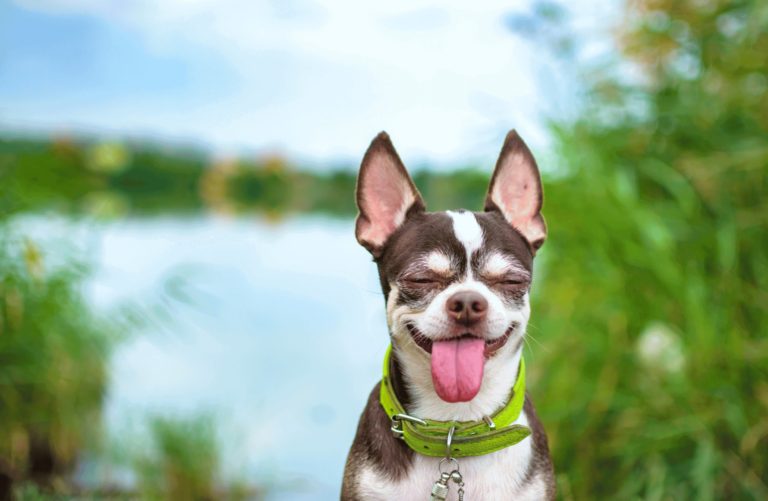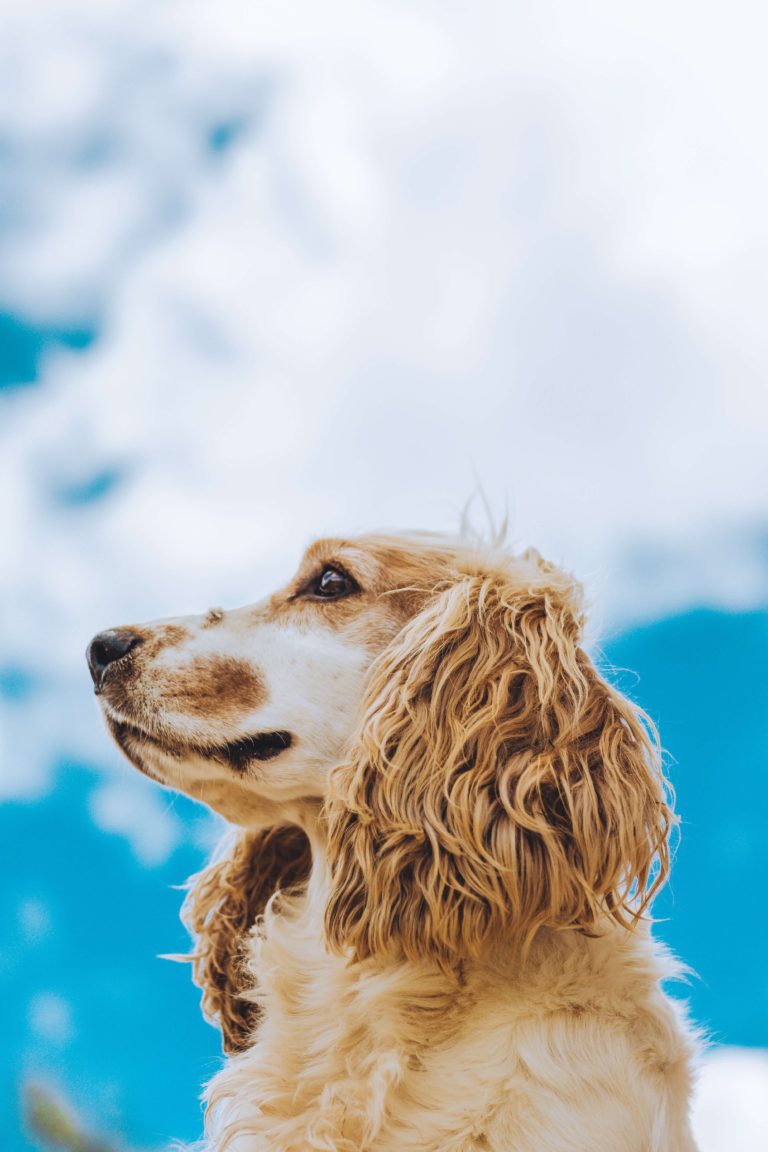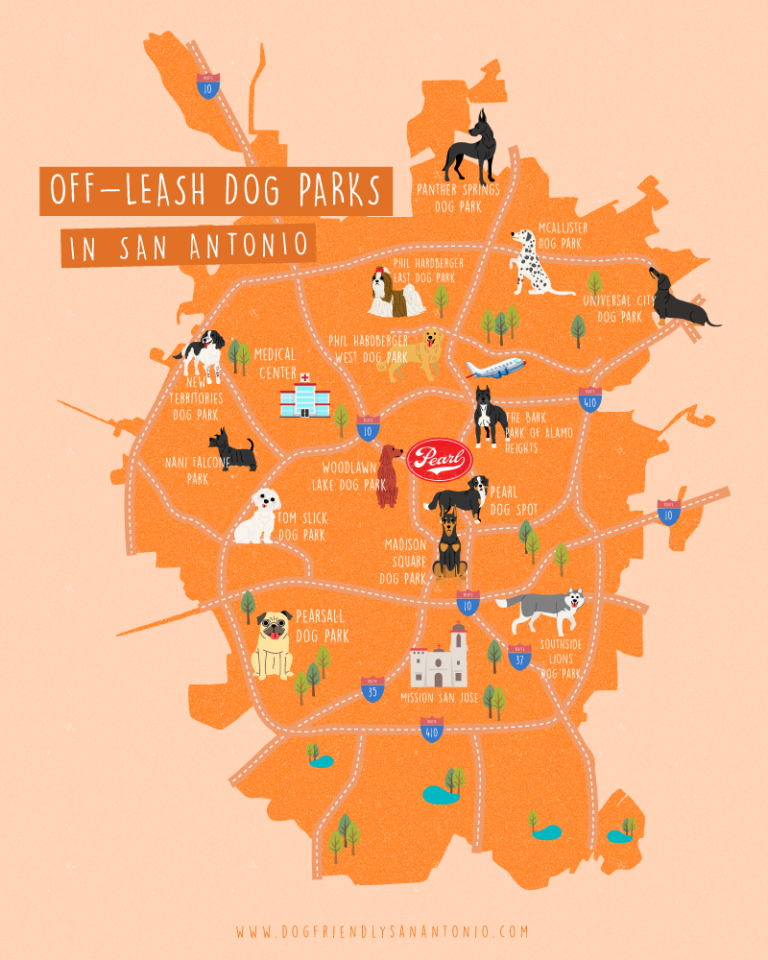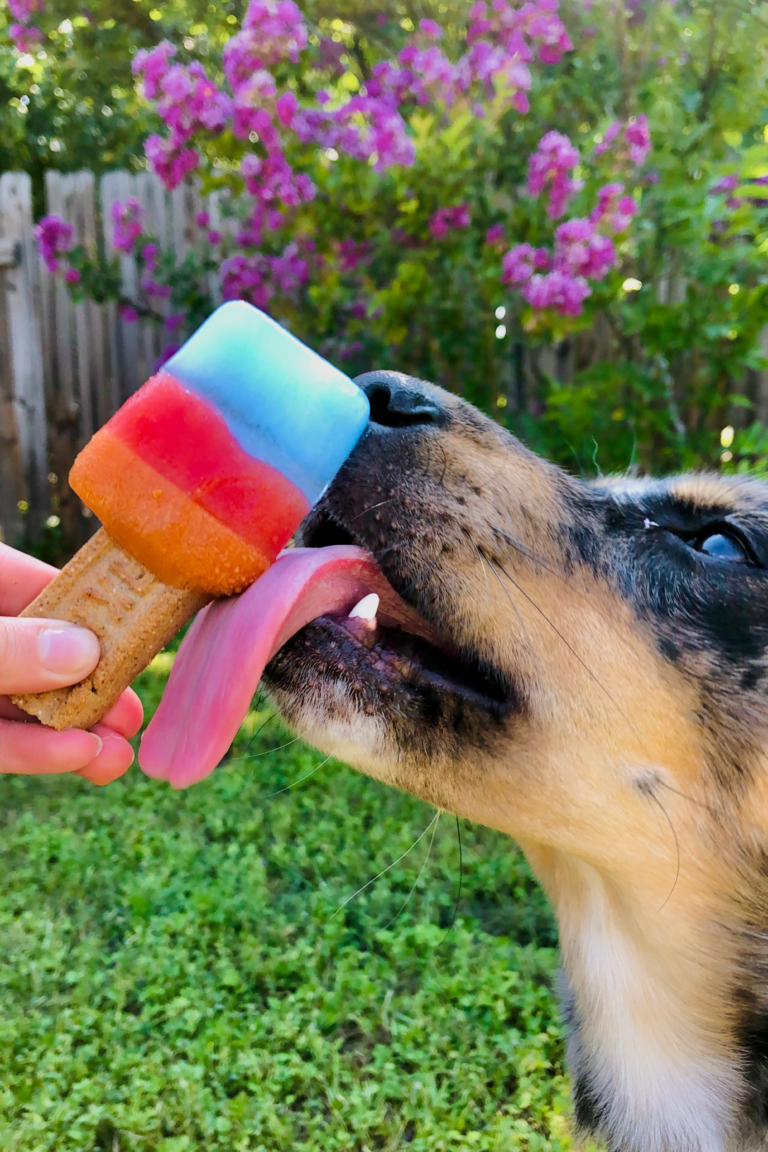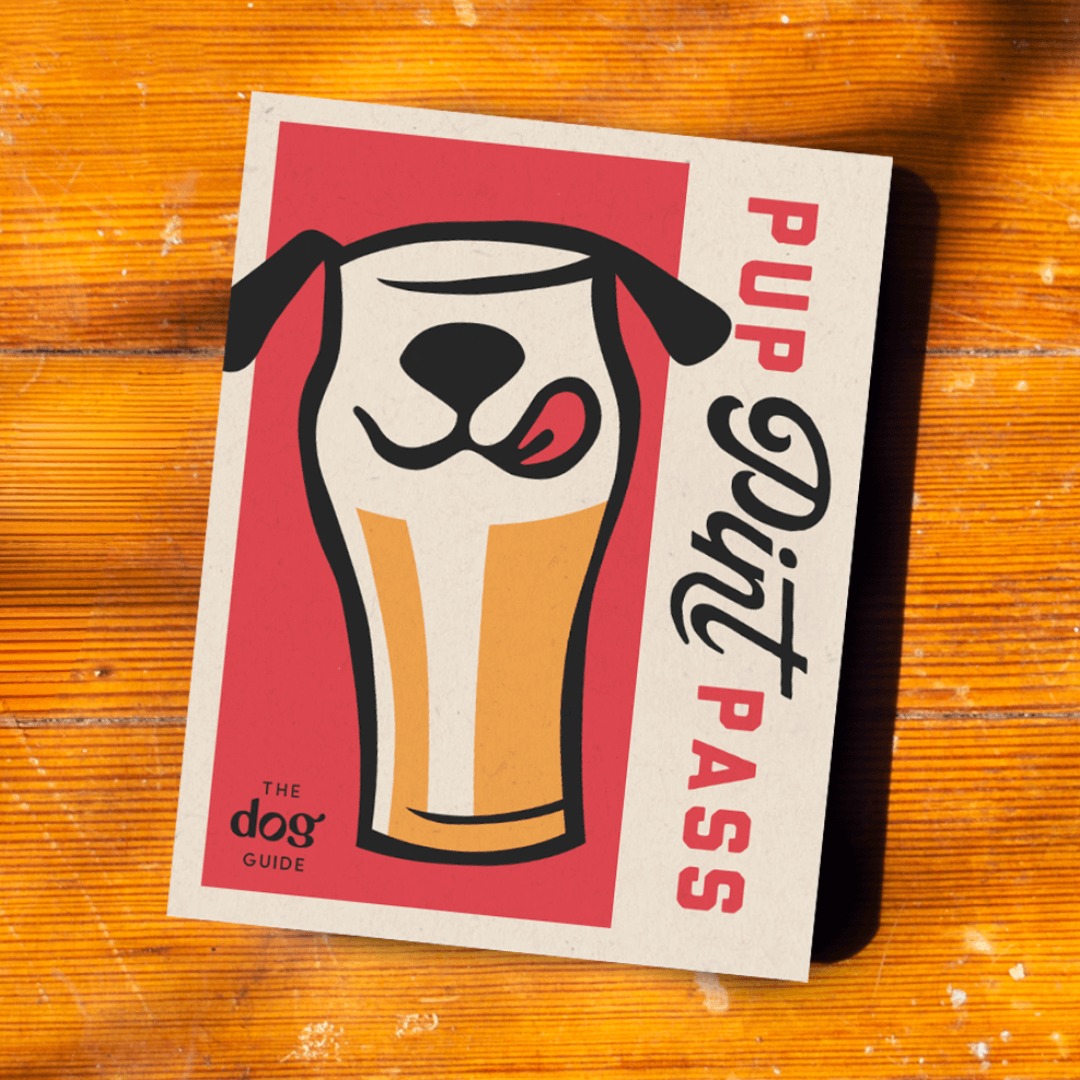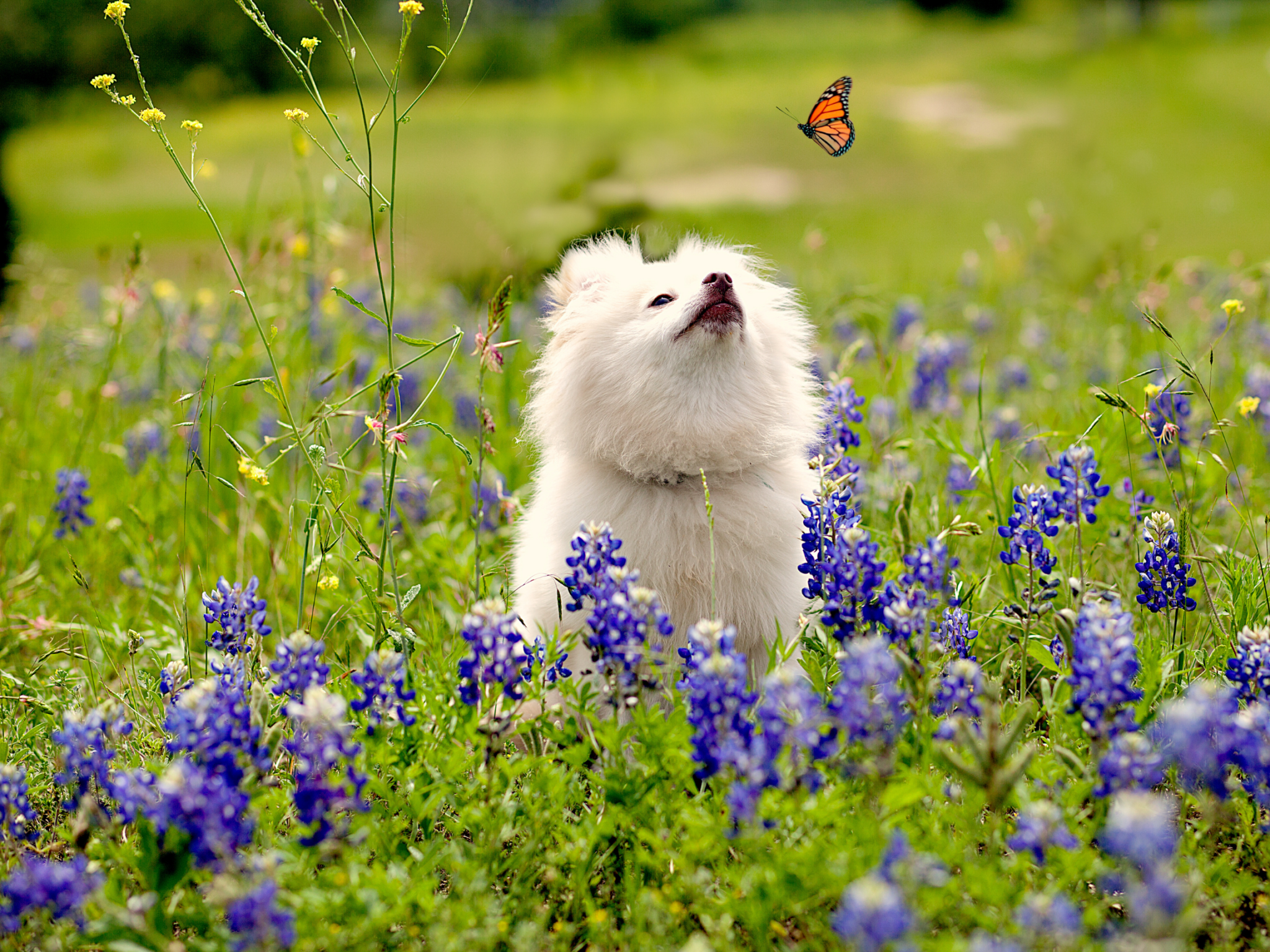
Springtime in Texas is synonymous with the vibrant hues of bluebonnets, the state flower, painting the landscape in shades of blue, pink, and yellow. As social media feeds fill with picturesque snapshots of Texan children frolicking in fields of lupinus texensis, it’s time for our furry companions to join the spotlight in capturing the essence of Texas’ wildflower season.
So, leash up your pup and embark on an adventure to explore the best places for bluebonnet pictures in the heart of central Texas, amidst the breathtaking scenery of the Texas Hill Country for this beloved Texas tradition.
When Is Texas Bluebonnet Season?
Typically, bluebonnet season in Texas begins in mid to late March and extends through early April, with peak bloom occurring during this time of year. However, the timing can fluctuate slightly from year to year and from region to region. Factors such as rainfall and temperature play a significant role in determining when the bluebonnets will bloom and how vibrant the display will be.
In Central Texas, including the San Antonio area, bluebonnets typically begin to bloom by the end of March, reaching their peak in early to mid-April, sometimes even stretching to the end of April. This timeframe coincides with the arrival of warmer temperatures and longer daylight hours, creating optimal conditions for the wildflowers to flourish.
To ensure the best chance of experiencing the beauty of bluebonnet season, keep an eye on local weather forecasts and bloom reports. Many parks, botanical gardens, and wildflower organizations provide updates on bloom status and recommended viewing locations, helping you plan your visit accordingly.
History of the Texas State Flower:
The bluebonnet holds a special place in the hearts of Texans, not only for its stunning visual appeal but also for its historical significance. Legend has it that the bluebonnet became the state flower of Texas in 1901, after the Texas Legislature decided that the state needed an official flower. In a contest including the cotton boll and cactus, the bluebonnet emerged victorious.
The bluebonnet’s scientific name, lupinus texensis, pays homage to its Texas roots. This resilient flower thrives in the harsh climate of the Lone Star State, symbolizing the spirit of perseverance and resilience that characterizes the people of Texas.
Former First Lady Claudia Alta “Lady Bird” Johnson played a pivotal role in promoting the preservation and proliferation of native wildflowers, including the bluebonnet. Inspired by the wildflower’s beauty, Lady Bird Johnson spearheaded initiatives to beautify highways and roadsides across Texas, leaving a lasting legacy of natural beauty for generations to come.
Although the Lady Bird Johnson Wildflower Center is a popular place to see the Texas wildflowers, it’s unfortunately only open to service dogs. Here are our top picks that are dog-friendly though.
Curious to know the State Dog of Texas? Learn all about that special breed here.
7 Bluebonnet and Wildflowers Spots Near San Antonio
Lyndon B. Johnson National Historical Park and the LBJ Ranch | Johnson City
Located about 60 scenic miles from San Antonio, Johnson City is home to the Lyndon B. Johnson National Historical Park as well as the LBJ Ranch, near Stonewall. It shouldn’t come as a surprise that former first lady, Lady Bird Johnson made it her mission, while serving as First Lady, to educate and proliferate wildflowers in the area surrounding her husband’s boyhood home.
Both the LBJ Historical Park as well as the LBJ Ranch should be in full bloom in the coming month and provide shady areas to hike, picnic, and tour the parks after you’ve snapped some good shots of your pets in the flowers. The LBJ Ranch is also a great spot to catch a glimpse of a Texas Longhorn or two.
Blanco State Park
Nestled along a one-mile stretch of riverfront, Blanco State Park tends to have a beautiful show of flowers in the spring. Located just a short (and scenic) drive from San Antonio (40 miles north on Highway 281), this park offers ample picnic spots as well as water fun for the whole family.

Government Canyon State Natural Area
Government Canyon State Natural Area features an astounding 12,000 acres of natural area, most of which is painted with wildflowers this time of the year. The park also has over 40 miles of hiking trails, so after you snap some photos in the flowers, take your dog on a nice, long hike. Government Canyon State Natural Area is located in northwest San Antonio, near Loop 1604 and Culebra Road.
Guadalupe River State Park
The beautiful Guadalupe River is the main draw of this state park, but in the spring, flowers pop up all over, making for a lovely place to enjoy the flora and snap your photos. If the weather is warm enough, dip your toes in the river and explore the 13 miles of hiking trails with Fido. Guadalupe River State Park is located 30 miles north of San Antonio in Spring Branch.
Wildseed Farms | Fredericksburg
If you need a sure-fire, no-fail bluebonnet photo session, then Wildseed Farms is your safest best. Wildseed Farms has grown wildflowers for the production of seeds for over 35 years, so they know what they’re doing. While there are fields that are off-limits to visitors, there are plenty of potted and wild areas where your family can certainly pose with a poppy or 800. Wildseed Farms welcomes well-mannered dogs on leash.
Willow City Loop | Fredericksburg
If you’re heading toward Wildseed Farms anyway, it makes sense to take a scenic detour to the famed Willow City Loop. This 13 mile loop wraps around from Fredericksburg to Llano, on Highway 16 then heads east on Ranch Road 1323 toward Willow City. Please note that much of the land surrounding this loop is private, so you might have to get creative in finding spots to walk and snap photos among the blossoms.
Brenham, Texas
If you want to make a bit of a road trip out of town, head east about 150 miles to Brenham. Brenham boasts a diverse and stunning collection of wildflowers most every spring. Head directly to the Brenham Chamber of Commerce (115 W. Main Street) and pick up a Wildflower Watch Map, which will help you easily locate the best spots for some primo photos.
Our Favorite Spot in San Antonio: McAllister Park
Nestled in the heart of San Antonio, McAllister Park is a hidden gem renowned for its stunning field of bluebonnets during springtime. Each year, the park plays host to the annual Fest of Tails, a celebration of kites and dogs that coincides with the peak season for bluebonnets. Visitors can stroll through the park’s expansive green spaces, while enjoying live music, food vendors, and kite-flying festivities.
On the north end of the main field, you’ll find a sea of bluebonnets. It’s the perfect opportunity to capture beautiful bluebonnet pictures with your furry friend amidst the lively atmosphere of this beloved San Antonio tradition.
A Note About Side of the Highway Photos
While the allure of a picturesque backdrop of Texas bluebonnets along a bustling highway may be tempting for capturing the perfect photo with your furry companion, it’s not the best place for dogs. The noise and distraction of passing vehicles can startle pets, leading to unpredictable behavior and potential safety hazards.
Furthermore, the proximity to moving traffic increases the likelihood of accidents or injuries, both for you and your furry friend. Even a momentary lapse in attention could result in a dangerous situation.
Instead, opt for safer alternatives such as designated rest areas, parks, or scenic overlooks where you and your pup can enjoy the beauty of nature without the added risk of highway traffic. These locations provide a safer and more tranquil environment for capturing memorable moments with your furry companion while minimizing the potential for accidents or injuries. Remember, the safety and well-being of both you and your pet should always be the top priority when embarking on a photo adventure.
A Few Tips For Getting The Best Bluebonnet Photos
Watch where you sit!
Between snakes and fire ants, as pretty as those blooms are, danger sometimes lurks among them, so be careful where you ask Fido to sit. Scope out the area first and make sure that it’s clear of fire ant beds (especially if it’s rained recently, as that is when the ants seem to be most active) and anything else that could harm your pooch.
Golden Hour Magic
Take advantage of the soft, golden light during the early morning or late afternoon for a stunning bluebonnet photo shoot.
Don’t pick the bluebonnet flowers!
While it’s actually an urban legend that it’s illegal to pick a bluebonnet in Texas, it is still very much frowned upon. Not only can humans mar a field in no time if everyone is picking flowers, but the plant also relies on the bloom to help reseed itself so that there will be flowers next year.
Scoop the poop
Surely we don’t have to say it, but, in the event that Fido needs to “commune with nature,” be sure to pick it up! You know that families will be tromping all around the wildflower areas in search of the perfect photo spot and nothing ruins a good photo opportunity like a baby sitting in dog poop.
We hope you’re feeling inspired to include your dog in your family photos in a bluebonnet field this year.
Don’t see your favorite places for bluebonnet pics above? Tell us in the comments. And tag us in those gorgeous photos we know you’ll be taking on Instagram.
Author: Jenny Jurica
Jenny is a married mother of two humans, one rescued Weimaraner, and four (yes, four) rescued cats. She is a native Texan who is a columnist/contributor for several publications and enjoys spending her free time curled up on the couch with a dog and a couple of cats. Much like the poet Sylvia Plath, Jenny often finds that she, “likes people too much or not at all,” but has never met an animal that she didn’t instantly adore (except for maybe the Komodo dragon at the zoo).


